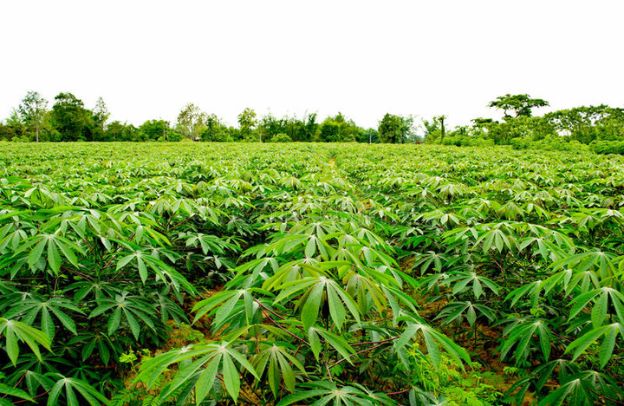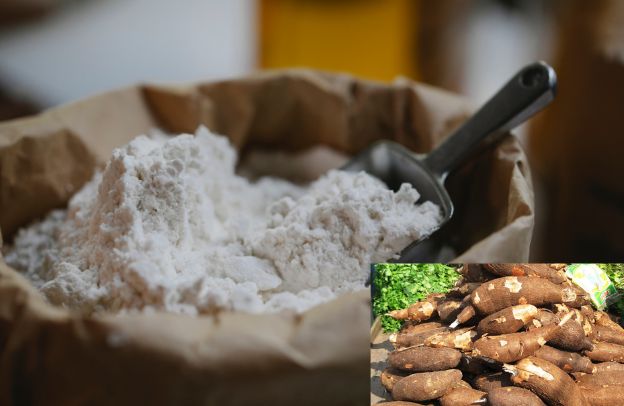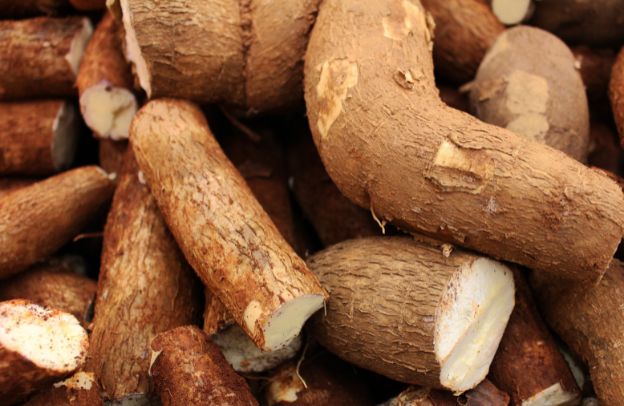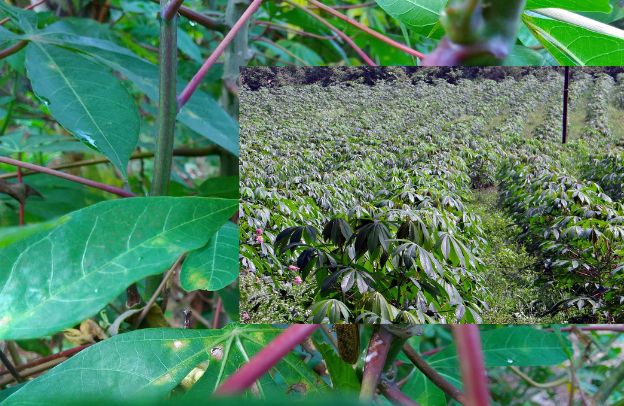Processing Cassava for Increased Profit: A Guide for Nigerian Farmers

Cassava is one of the most important crops in Nigeria, providing a source of food, income, and employment for millions of people. While many Nigerian farmers grow cassava, not all of them are taking advantage of the lucrative opportunities that come with processing the crop.
Processing cassava can lead to increased profits for small and medium-scale farming businesses. However, many farmers lack the knowledge and resources to engage in cassava processing.
In this guide, we will explore the various techniques and equipment involved in processing cassava, as well as the cost analysis and profitability of the venture. Additionally, we will discuss the challenges and opportunities in cassava processing and how the government is supporting this sector.
If you are a Nigerian farmer looking to increase your income and expand your business, this guide will provide you with the essential information to start processing cassava for increased profits.
Understanding Cassava Processing
Cassava processing is the transformation of the cassava root into various marketable products, such as flour, starch, and gari. Processing cassava is important for small and medium-scale farming businesses because it adds value to the crop, making it more profitable. Without processing, cassava is limited to fresh consumption, which has a short shelf life and low market value.
There are various types of cassava processing techniques, including fermentation, grating, pressing, and drying. Fermentation is a technique that involves soaking cassava in water for several days to soften it and enhance its flavor.
Grating involves shredding cassava into small pieces using a manual or mechanized grater. Pressing involves squeezing the grated cassava to remove excess water, while drying involves sun-drying the grated cassava to reduce moisture content.
The benefits of cassava processing are numerous. First, processing cassava increases its shelf life, making it available all year round. Processed cassava products are also easier to transport, store and sell compared to fresh cassava. Additionally, cassava processing creates employment opportunities for people in rural areas, thus contributing to poverty reduction.
Cassava processing also reduces food waste, as it allows for the utilization of cassava that would otherwise go to waste.
In conclusion, processing cassava is crucial for small and medium-scale farming businesses in Nigeria. It adds value to the crop, making it more profitable and creating opportunities for employment and poverty reduction. There are various processing techniques available to farmers, and the benefits of cassava processing are numerous.
Pre-processing activities
Pre-processing activities are an essential part of cassava processing, as they prepare the cassava for further processing. These activities involve harvesting and transportation, sorting and grading, washing and peeling, and drying and milling.
Harvesting and transportation involve the use of proper tools and equipment to harvest cassava roots and transport them to the processing site.
Harvesting should be done when the roots are mature, usually between 9 to 12 months after planting. It is important to handle the roots with care during transportation to prevent damage and bruises.
Sorting and grading involve separating the cassava roots according to size and quality. This helps to ensure that the processed cassava products are of consistent quality. Small and diseased roots should be separated from the larger, healthier ones.
Washing and peeling is an important step in cassava processing, as it removes dirt and debris from the roots and improves the quality of the processed product. This can be done manually or mechanically, depending on the scale of processing.
Drying and milling involve reducing the moisture content of the cassava roots and grinding them into fine powder. Drying can be done using the sun, a mechanical dryer, or a combination of both. Milling can be done using a manual or mechanized grinder.
In conclusion, pre-processing activities are critical in cassava processing, as they ensure that the cassava roots are prepared for further processing. These activities involve harvesting and transportation, sorting and grading, washing and peeling, and drying and milling.
Proper pre-processing ensures that the final product is of consistent quality and maximizes the profitability of the processing venture.
Processing activities
Processing cassava involves a variety of machines and techniques that transform the harvested and pre-processed cassava roots into marketable products. Some of the key processing activities include the use of cassava processing machines, various processing techniques, and quality control measures.
There are different types of cassava processing machines available for farmers, including manual and mechanized options. Manual machines are less expensive but require more labor and time, while mechanized machines are more efficient and require less labor.
Examples of cassava processing machines include cassava graters, cassava presses, and cassava milling machines.
Processing techniques for cassava include fermentation, grating, pressing, and drying. Fermentation involves soaking the cassava roots in water for a few days to break down the starch and improve flavor. Grating involves shredding the cassava roots into small pieces using a manual or mechanized grater. Pressing involves squeezing the grated cassava to remove excess water, while drying involves sun-drying the grated cassava to reduce moisture content.
Quality control measures are critical in cassava processing to ensure that the final product is of high quality and safe for consumption. Quality control measures include monitoring the processing conditions, ensuring the cassava is properly washed and peeled, and testing the final product for contaminants and other harmful substances.
In conclusion, cassava processing involves the use of various machines and techniques to transform cassava roots into marketable products. Processing machines range from manual to mechanized, and processing techniques include fermentation, grating, pressing, and drying.
Quality control measures are also critical in ensuring the final product is safe for consumption. Proper processing leads to a high-quality product and maximizes the profitability of the processing venture.
Post-processing activities
Post-processing activities are essential in cassava processing, as they prepare the processed cassava products for sale and distribution. Two key post-processing activities include packaging and storage and marketing and sales.
Packaging and storage involve ensuring that the processed cassava products are properly packaged and stored to maintain their quality and shelf life. Packaging can be done using various materials such as polythene bags, jute bags, and plastic containers. The packaging materials should be clean, and durable, and protect the products from damage and contamination.
Proper storage is also critical to ensure that the processed cassava products remain in good condition for longer. Factors such as temperature, humidity, and pests can affect the quality and shelf life of the products. Storage facilities should be clean, dry, and well-ventilated to prevent spoilage and mold growth.
Marketing and sales are the final steps in cassava processing, where the processed cassava products are sold and distributed to consumers. Farmers can sell their products directly to consumers or intermediaries such as wholesalers and retailers.
Effective marketing involves identifying target markets, developing marketing strategies, and creating brand awareness. Farmers can use various marketing channels such as social media, exhibitions, and word of mouth to promote their products.
In conclusion, post-processing activities are critical in cassava processing, as they prepare the processed cassava products for sale and distribution. Packaging and storage ensure that the products remain in good condition, while marketing and sales help farmers reach their target markets and maximize their profits.
Proper post-processing activities lead to a high-quality product, increase consumer confidence, and enhance the profitability of the processing venture.
Cost Analysis and Profitability
Cost analysis and profitability are important factors to consider in cassava processing, as they help farmers determine the viability of the processing venture and make informed decisions about their business. Key factors to consider in cost analysis and profitability include the cost of production, estimated revenue, and profit margin.
The cost of production includes all the expenses incurred in cassava processing, such as labor, equipment, materials, and overhead costs. Farmers need to keep track of their expenses to determine the total cost of production accurately. The cost of production can vary depending on the processing method used, the size of the processing operation, and the availability of raw materials.
The estimated revenue is the amount of money that farmers expect to earn from the sale of their processed cassava products. Farmers can estimate their revenue by considering the selling price of their products, the volume of sales, and the target market. The estimated revenue can also be influenced by factors such as competition, market demand, and pricing strategy.
Profit margin is the difference between the total revenue earned and the total cost of production. A high-profit margin indicates that the processing venture is profitable, while a low-profit margin may indicate that the processing venture is not viable. Farmers need to calculate their profit margin accurately to determine the profitability of their processing venture.
In conclusion, cost analysis and profitability are critical in cassava processing, as they help farmers make informed decisions about their business. Farmers need to consider factors such as the cost of production, estimated revenue, and profit margin to determine the viability of their processing venture.
By understanding the cost and revenue dynamics of cassava processing, farmers can maximize their profits and ensure the long-term success of their businesses.
Challenges and Opportunities
While cassava processing can be a profitable venture for small and medium-scale farmers, it is not without its challenges. Some of the challenges faced by cassava farmers include:
- Inadequate processing equipment: Many farmers lack access to modern and efficient cassava processing equipment, which can affect the quality and quantity of their processed products.
- Lack of technical knowledge: Farmers may lack the technical knowledge and skills required to process cassava effectively, leading to low-quality products and reduced profitability.
- Limited market access: Farmers may face challenges in accessing markets for their processed cassava products, limiting their sales opportunities and profitability.
Despite these challenges, there are opportunities for farmers in the cassava processing industry. Some of the opportunities include:
- High demand for cassava products: There is a growing demand for cassava products both domestically and internationally, creating opportunities for farmers to expand their processing operations and increase their revenue.
- Government support: The government of Nigeria has implemented various policies and initiatives to support cassava processing, including providing funding and technical assistance to farmers.
- Export potential: Nigeria has a significant export potential for cassava products, with international demand for processed cassava products such as cassava flour, chips, and starch increasing.
In addition to government support, there are also private-sector initiatives aimed at supporting cassava processing in Nigeria. For example, some companies are partnering with small-scale farmers to provide them with processing equipment, technical assistance, and access to markets.
In conclusion, while cassava processing can present challenges for small and medium-scale farmers, there are also significant opportunities for growth and profitability. With government support and private sector initiatives, farmers can overcome these challenges and tap into the growing demand for cassava products both domestically and internationally.
Conclusion on Processing Cassava for Increased Profit: A Guide for Nigerian Farmers
In conclusion, cassava processing plays a vital role in the agricultural and economic development of many countries, particularly in Africa, Asia, and Latin America. It provides numerous opportunities for farmers to generate income, create jobs, and increase their productivity.
Therefore, farmers need to invest in cassava processing to maximize its potential benefits. With proper processing, cassava can be transformed into a range of value-added products, such as flour, starch, and ethanol, which have high demand in both local and international markets.
In addition to generating income, cassava processing can also improve food security by reducing post-harvest losses and increasing the availability of nutritious food products.
In light of these benefits, governments and development agencies should provide support to farmers in the form of training, financing, and access to modern processing technologies. This will help to increase the efficiency and competitiveness of the cassava processing industry and promote sustainable agricultural development.
In conclusion, cassava processing is a crucial step towards improving the livelihoods of farmers, enhancing food security, and promoting economic growth in developing countries. By investing in this sector, farmers can tap into the vast potential of cassava and contribute to the prosperity of their communities.






